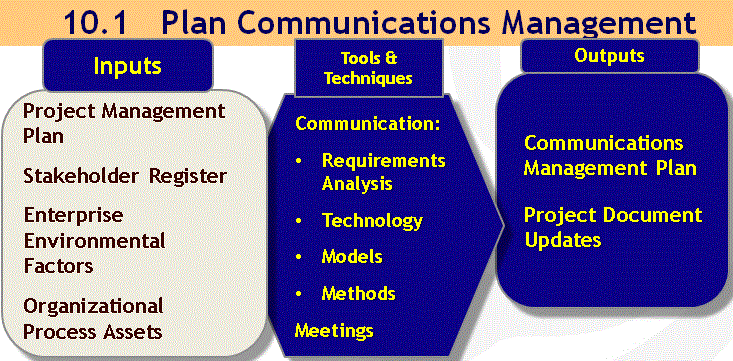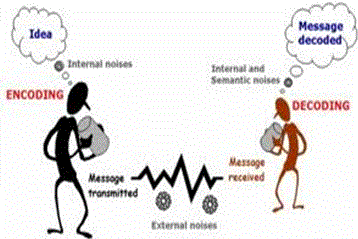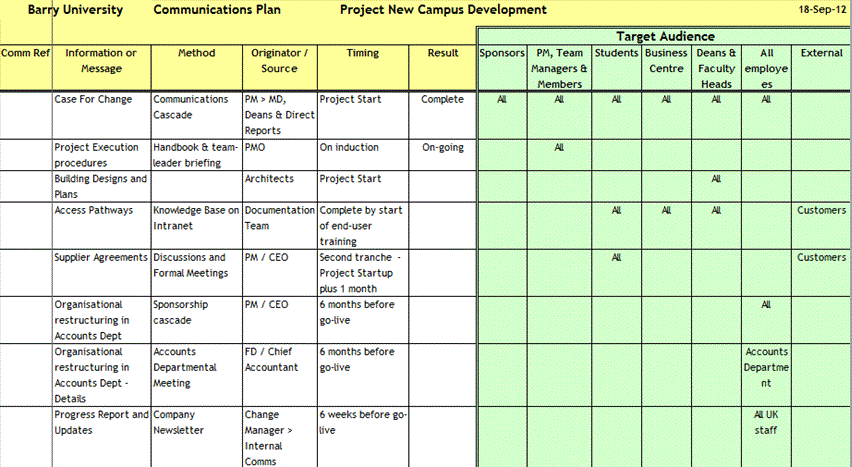Looking for Global training? Go to https://firebrand.training/en or stay on the current site (Danmark)
TERMS AND CONDITIONS
Firebrand Training grants you a personal, non-exclusive, non-transferable license to access and use the site. You may download or print material from the site only for your own personal, non-commercial use. Please read our full terms and conditions.
10.1 Plan Communications
"The process of developing an appropriate approach and plan for project communications based on stakeholders’ information needs and requirements and available organisational assets."
The definition shown above in italics is taken from the Glossary of the Project Management Institute, A Guide to the Project Management Body of Knowledge, (PMBOK® Guide) – Fifth Edition, Project Management Institute Inc., 2013

Project Management Institute, A Guide to the Project Management Body of Knowledge, (PMBOK® Guide) – Fifth Edition, Project Management Institute Inc., 2013 Figure 10-2 Page 289
Communications
Communications is always vital. In a large project it can consume a lot of effort.
- Communication Cascade(s)
May require communication specialists.
- Actors/Celebrities to show/make the message
- Specialists to identify and create the message which is clear and consistent with what the sender wants to send and the receiver needs to hear -> understanding
Purpose is to:
- Provide information/knowledge
- Give the basis for change
- Inspire/persuade people
- Create a mass of desire in the change subjects

Remember – the PMP exam assumes you are a PM for a very large project, and all project processes apply
Tools and Techniques
Communications Requirements Analysis
- Who needs what information
- To what level of detail
- When is it required
- What format will it be given in
- What value will it add (could it be done better another way)
- Confidentiality (internal/external)
- Security / delegated access
Could do this when carrying out a stakeholder analysis (13.1 Identify Stakeholders)
Communication Channels
N = number of channels of communication possible in a group n= number of stakeholders in the group

A formula to remember
You are a PM for the WYZ project and have 24 stakeholders. Which option gives the right number of communication channels?
A 650 B 525 C 300 D 276
Communications Technology
Technology factors which may affect the project communications include:
- Urgency of the need for information.
- Availability of technology.
- Expected project staffing.
- Length of the project.
- Project environment.
Communication Model
- Encode
- Message
- Conveying medium
- Noise – interference, barriers
- Decode

Responsibility of sender to verify if receiver correctly understood the message
Communication Factors
Considerations:
- Urgency
- Speed
- Availability
- Costs of technology
- Project Environment
- Suitability/ease of use
- Co-location or Remote Working
Barriers
- Noise
- Medium not appropriate
- Emotions
- Feelings
- Poor listening skills (active versus passive listening)
- Language difficulties: eg.President John F Kennedy saying Ich bin ein Berliner – instead of Ich bin Berliner (I am a doughnut, not I am a Berliner!) when arriving in Germany
Communication methods
Interactive
- Multi directional – meetings, phone calls, video conferencing, skype, face time, video cascades
Push
- Information targeted to particular people with a need for it – letters, memos, reports, emails, faxes, voice mails, text/sms, press releases
Pull
- Large volumes of information; large audiences - sharepoint portals, intranets, discussion databases; e-learning suites; e-libraries Co-location – working in the same room War Room - Bunker for special meetings
Communications Planning
Identifies:
- Stakeholder communication requirements
- Information to be communicated – Incl. content and level of detail
- Who will communicate the information
- Recipients of the information
- Methods / technologies to be used
- Frequency and format of the communication
- Who will authorise release of confidential information
- Flowchart showing activity sequence and decision points
- Escalation process
- Time frames
- Route
- Method of updating and refining the Communications Management Plan
- Constraints and Glossary
Part of the Communications Plan

DISCLAIMER
Firebrand Training grants you a personal, non-exclusive, non-transferable license to access and use the site. You may download or print material from the site only for your own personal, non-commercial use. Read our full terms and conditions on https://firebrand.training/dk/learn/terms-and-conditions.
 Part of the BPP Education Group
Part of the BPP Education Group